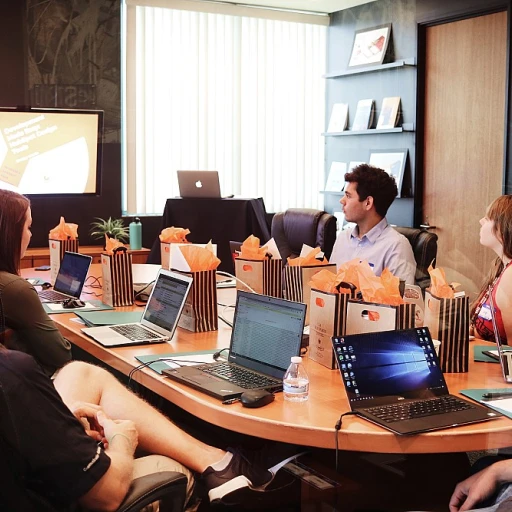
Understanding the Importance of Employee Recognition
Nurturing a Positive Workplace Culture
Inspire a culture where employees feel valued and appreciated by understanding the significance of employee recognition. Recognition programs are more than just rewarding hard work; they serve as powerful tools that engage and motivate the team, driving both individual and organizational success. In today’s competitive landscape, it is vital for a company to have a recognition policy in place that acknowledges the contributions employees make to core values and workplace culture.
Employee appreciation plays a crucial role in shaping a thriving company culture. By crafting recognition templates that align with company values, organizations can ensure that employee recognition becomes an integral part of their everyday work environment. This approach not only fosters a sense of belonging but also boosts employee engagement.
Recognition programs must be thoughtfully designed to include specific elements that reflect the values and priorities of the organization. Such programs enhance employee satisfaction and work life balance over time, effectively enhancing overall productivity and success. To delve deeper into establishing a well-rounded recognition program that addresses diverse needs, consider exploring the importance of understanding the career maturity inventory for accommodating different stages of career growth.
The effectiveness of recognition templates is also evident when they allow flexibility and personalization, offering tailored approaches to acknowledge exceptional contributions. By consistently celebrating employee achievements and milestones, a company can solidify its commitment to a supportive and respectful work atmosphere. This reinforces the sense of community and loyalty among employees, ultimately contributing to long-term organizational success.
Key Elements of a Successful Recognition Program
Essential Components of Rewarding Employees
Designing a successful recognition program involves understanding the vital components that contribute to a thriving workplace environment. By integrating specific strategies, companies can promote a culture of appreciation, encouraging employees to feel valued and engaged.- Clear Criteria: It's crucial to establish explicit criteria for recognition, ensuring that employees understand what behaviors and contributions are celebrated. This clarity helps in fostering an organization where individuals strive for excellence.
- Inclusivity: Programs should be inclusive, allowing employees from various backgrounds and roles to be acknowledged for their work. Broadening the scope of recognition ensures that everyone in the team feels appreciated, strengthening overall team cohesion.
- Variety of Rewards: Providing a range of rewards caters to different preferences. Options like peer recognition and formal recognition serve distinct purposes and can be offered through recognition templates that are adaptable to specific situations.
- Consistent Communication: Regularly communicating the value of recognition through company channels reinforces its importance within the corporate culture. This can include sharing success stories and highlighting how appreciation aligns with company values.
- Tangible Outcomes: Implementation of recognition programs should ideally lead to tangible outcomes, such as enhanced employee engagement and a more positive workplace culture. Evaluating the impact of these programs will ensure they are achieving desired goals.
Aligning Recognition with Company Values
Aligning Recognition with Core Company Values
Developing a successful employee recognition program is not solely about giving praise or presenting awards. A crucial part of these programs is ensuring that the recognition aligns with the organization's core company values. When appreciation efforts resonate with the company's ethos, they enhance the workplace culture and reinforce positive behaviors among team members. To start, companies need to identify their values clearly. These values should guide the behavior and decision-making processes within the organization, acting as a cornerstone for the workplace culture. Incorporating these values into an employee recognition program ensures that both employees and the company are working towards the same objectives. A recognition template that integrates company values can amplify the impact of awards. For example:- Explicitly Connect Recognition to Values: When recognizing employee contributions, explicitly mention how the specific actions reflect the company's values. This not only highlights the importance of core values but also motivates other employees to follow suit.
- Promote Peer Recognition Aligned with Values: Encourage team members to participate in peer recognition by supporting a culture of appreciation based on shared values. Organizations can foster an environment where employees feel valued and engaged.
- Tailor Recognition Programs to Reflect Values: Craft recognition templates and programs that mirror each core value. For instance, if a primary value is innovation, create a specific program category that applauds creative initiatives, thus reinforcing that value through reward recognition.
Incorporating Flexibility and Personalization
Embracing Flexibility in Recognition Programs
Incorporating flexibility and personalization in recognition programs is crucial for fostering a workplace culture where employees feel genuinely appreciated. A one-size-fits-all approach may not resonate with everyone, as each employee values different forms of recognition. Tailoring your recognition templates to accommodate individual preferences can significantly enhance employee engagement and satisfaction.
To start, consider the following strategies:
- Personalized Rewards: Offer a variety of rewards that cater to different interests. Some employees might appreciate time-off, while others might prefer gift cards or public acknowledgment. By providing options, you ensure that each employee feels valued in a way that resonates with them.
- Flexible Recognition Timing: Recognition doesn't always have to be formal or scheduled. Encourage managers and peers to recognize contributions spontaneously. This can be as simple as a quick note of appreciation or a shout-out during a team meeting.
- Peer Recognition: Allow team members to recognize each other's hard work. Peer recognition can be a powerful tool in building a supportive and collaborative workplace culture.
By aligning recognition with company values and embracing flexibility, organizations can cultivate a culture of appreciation that not only celebrates achievements but also reinforces the core values of the company. This approach not only acknowledges the specific contributions of employees but also strengthens the overall success of the organization.
Measuring the Impact of Recognition on Work Life Balance
Evaluating the Ripple Effect on Workplace Wellbeing
When organizations invest in recognition programs, it is essential to understand the influence these programs have on employees' overall wellbeing, particularly in terms of work life balance. These programs should be designed not just to acknowledge employees' contributions, but also to foster an environment where employees feel appreciated and supported.
Measuring the impact of employee recognition is crucial, as it helps to align the program with the core company values and contributes to a positive workplace culture. A well-executed recognition template can promote higher levels of employee engagement, increase motivation, and ultimately benefit both the individual and the organization.
- Feedback Mechanisms: Encourage employees and managers to provide feedback on the recognition program. Insights gathered can offer valuable perspectives on its effectiveness and areas for enhancement.
- Benchmarking Success: Use specific metrics to assess how the recognition scheme impacts key organizational factors like turnover rates, job satisfaction, and productivity levels. Tailor these metrics to reflect your company's unique goals and culture.
- Assessing Employee Wellbeing: Gauge how employees' perceptions of appreciation correlate with their work life balance. Regular surveys and interviews can uncover trends and preferences, guiding the continuous improvement of the program.
By prioritizing the measurement of recognition impact, companies cultivate a thriving environment where both the staff's achievements and workplace culture are continually nurtured. As such programs evolve, they support not only the success of the organization but also the personal success of every team member, reinforcing the essential values around which the company is built.
Continuous Improvement of Recognition Programs
Enhancing Recognition Programs for Long-Term Success
Continuous improvement is a cornerstone of any effective employee recognition program. As organizations evolve, so too should their recognition strategies. This ensures that the programs remain relevant and impactful, fostering a culture of appreciation and engagement.
Regular Feedback and Adaptation
Gathering feedback from employees is crucial. It allows the company to understand how the recognition program is perceived and what changes might enhance its effectiveness. Encourage open communication within the team to ensure that the recognition templates and strategies align with the employees' expectations and the company values.
Monitoring and Measuring Impact
To truly understand the success of recognition programs, organizations should implement specific metrics to measure their impact on employee engagement and work life balance. This could include surveys, performance reviews, and analyzing employee retention rates. Such data-driven insights help in refining the recognition strategies over time.
Adapting to Cultural Shifts
Company culture is not static. As the workplace culture evolves, recognition programs should be revisited to ensure they reflect current values and goals. This might involve incorporating more personalized recognition methods or adapting the rewards to better suit the team’s preferences.
Promoting Peer Recognition
Encouraging peer recognition can enhance the overall effectiveness of the program. When employees feel appreciated by their colleagues, it strengthens the team’s bond and reinforces a positive workplace culture. Implementing peer recognition initiatives can be a valuable addition to formal recognition efforts.
Leveraging Technology
Utilizing technology can streamline recognition processes and make them more accessible. Digital platforms can facilitate real-time recognition and allow for more personalized approaches. By integrating technology, companies can ensure that their recognition programs remain efficient and engaging.












